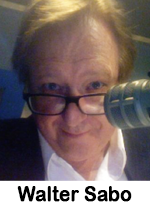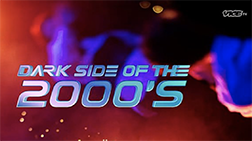By Walter Sabo
Consultant, Sabo Media
A.K.A. Walter Sterling
Radio Host, Sterling on Sunday
 Oh, excuse me, hold on. Here it is! The hourly report from quasi research companies or real research companies like Nielsen declaring that radio is just fine, thank you! Massive surveys (choose one) reveal that radio works! Radio appeals to younger demos! Radio moves product! Radio has more listeners in AM drive than the “Tonight Show” has viewers! A landslide of data proves that after 100 years of success, radio is a viable medium.
Oh, excuse me, hold on. Here it is! The hourly report from quasi research companies or real research companies like Nielsen declaring that radio is just fine, thank you! Massive surveys (choose one) reveal that radio works! Radio appeals to younger demos! Radio moves product! Radio has more listeners in AM drive than the “Tonight Show” has viewers! A landslide of data proves that after 100 years of success, radio is a viable medium.
Crazy stuff.
As both a radio executive and host, I don’t need to know that radio works. I see the sales results from your show and from “Sterling On Sunday.” No advertiser gives us money for the heck of it. The checks clear; there’s your proof. The research that is desperately needed would support innovative, disruptive programming. Radio will grow its place in American media by surprising listeners with new formats, new forms of presentation and things that are… new.
Radio exists today because of innovations like Top 40! Urban! Progressive Rock! AOR! Modern Country! FM Talk! and The Seven-Second Delay!
Today, however, there is nothing harder than selling a radio executive a new idea. Any new idea. It is hard for a very good reason. Radio stations are major investments and failure is expensive. In 1977, the most expensive radio stations in history sold for $11 million. (WMAL/WRQX-FM, Washington DC.) In absolute dollars, experimentation was a minor financial risk. Risk would be manageable if owners had sophisticated research tools to test new ideas.
State-of-the-art new product research is required to take radio safely onto the golden path to innovation. How’s your research and development budget? Oh.
Each television network invests about $100 million a year in developing and testing new shows. Those networks deploy stunning techniques to find and test new ideas. There will be new formats and techniques when the collective “we” is finally convinced that radio is a success. Then our research investments can be focused on cutting-edge product research tools that can guarantee a successful pilot season and future.
Walter Sabo, consultant, can be contacted at Sabo Media: walter@sabomedia.com. Direct phone: 646-678-1110. Check out www.waltersterlingshow.com. Meet Walter Sabo at TALKERS 2023 on June 2 at Hofstra University.
Share this with your network
 “Shock Jocks Part 2: The Fall.” Through interviews with major players in the radio and entertainment industries, including TALKERS magazine publisher Michael Harrison, the story of the growth of male-targeted “FM talk” along with the vicious battles that took place between the major players is told. ViceTV is on a number of on-demand services. The episodes are also behind a paywall at vicetv.com.
“Shock Jocks Part 2: The Fall.” Through interviews with major players in the radio and entertainment industries, including TALKERS magazine publisher Michael Harrison, the story of the growth of male-targeted “FM talk” along with the vicious battles that took place between the major players is told. ViceTV is on a number of on-demand services. The episodes are also behind a paywall at vicetv.com.


 Oh, excuse me, hold on. Here it is! The hourly report from quasi research companies or real research companies like Nielsen declaring that radio is just fine, thank you! Massive surveys (choose one) reveal that radio works! Radio appeals to younger demos! Radio moves product! Radio has more listeners in AM drive than the “Tonight Show” has viewers! A landslide of data proves that after 100 years of success, radio is a viable medium.
Oh, excuse me, hold on. Here it is! The hourly report from quasi research companies or real research companies like Nielsen declaring that radio is just fine, thank you! Massive surveys (choose one) reveal that radio works! Radio appeals to younger demos! Radio moves product! Radio has more listeners in AM drive than the “Tonight Show” has viewers! A landslide of data proves that after 100 years of success, radio is a viable medium.